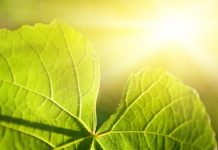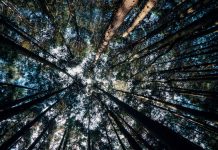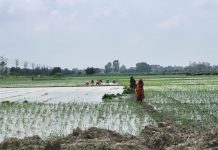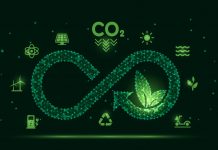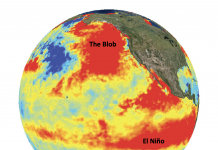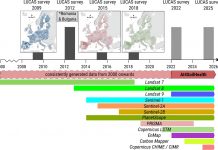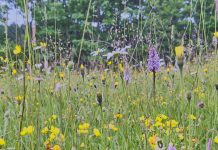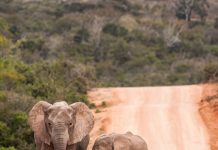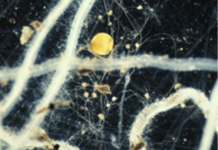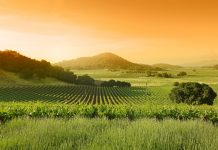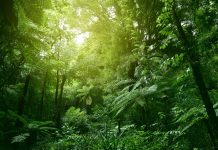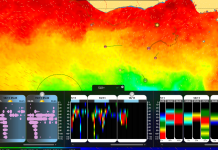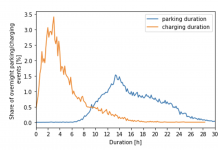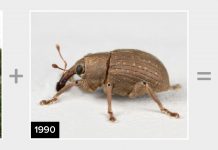Home Environmental Sciences
Environmental Sciences
Bacterial photobiohybrids and photosynthesis: Optimizing energy harvesting with bacterial-semiconductor hybrids
Photosynthesis serves as the primary mechanism for converting solar energy into chemical energy and plays a pivotal role in regulating atmospheric oxygen levels and carbon dioxide concentrations, influencing global climate patterns as a result.
Innovative climate research for guiding policy-making
Professor Phoebe Koundouri leads AE4RIA and UN SDSN Global Climate Hub, participating in innovative climate research impact projects.
Pavitra Ganga successfully demonstrates robust and low-energy wastewater technologies in India
Paul Campling is the coordinator and Anshuman is the scientific coordinator of the EU-India Horizon 2020 project Pavitra Ganga that ran from 2019 until the beginning of this year. This research and innovation project brought European and Indian partners together to collaborate on tackling wastewater treatment challenges and to unlock some of the resource recovery opportunities.
ARCHIMEDES Project ensures extended ECS lifetime
Reiner John, Coordinator Research Funding Corporate Strategy at AVL List, examines how the ARCHIMEDES project ensures an extended ECS lifetime with digital means and fosters a circular economy.
Seabirds and humpback whales give early warning to marine heatwaves
Lauren Bien from Prince William Sound Science Center and Mayumi Arimitsu from USGS, Alaska Science Center and additional contributors, John Moran and Rob Suryan, Alaska Fisheries Science Center explain how seabirds and humpback whales provide early warning signals during extreme marine heatwaves.
Soil health monitoring through iterative analysis of soil’s past, present, and future
Tom Hengl, Director of the OpenGeoHub foundation, discusses the importance of soil health monitoring and how the AI4SoilHealth project is supporting this endeavor.
The critical role of governments in benefit sharing
Dominic Muyldermans and Frank Michiels outline the key role governments can play in making a new multilateral mechanism for benefit sharing a success.
Conserving elephant populations: Not without consultation
Global North and South when it comes to conservation, human rights and climate protection, particularly concerning elephant populations.
Building a sustainable, high-impact, and ‘living’ biobank infrastructure in Canada
A living biobank can generate new insights about our care; Francois Lamontagne, Paul Hebert, and Michelle Kho tell us more.
EURO-CORDEX: A community effort provides the basis for regional climate adaptation in Europe
Climate change is a worldwide threat to humanity and to human activities. Especially in the densely populated continent of Europe, targeted adaptation to the man-made changes in climate is necessary.
Electric-field nanobubbles: Re-engineering water treatment
Niall J. English, from the University College Dublin, School of Chemical and Bioprocess Engineering, discusses electric-field generated nanobubbles, including re-engineering water treatment – and beyond.
Soil health: A role for arbuscular mycorrhizas
Lynette Abbott from The University of Western Australia, focuses on soil health again, this time examining the role of arbuscular mycorrhizas.
Permafrost grown: The heterogeneity of permafrost conditions
Melissa Ward Jones, from the University of Alaska Fairbanks, explains the heterogeneity of permafrost conditions and how it can impact agriculture.
Time to strengthen and enforce the north american migratory bird treaty act
The number of migratory bird populations is declining; Keith Hobson, professor and research scientist at Environment and Climate Change Canada and Western University, outlines the importance of updating conventions to protect these vulnerable species.
Ensuring the best performance of sensor-driven irrigation systems in vineyards
Professor Pete W. Jacoby, from Washington State University, explains how to ensure the best performance of sensor-driven irrigation systems in vineyards.
Protecting genetic diversity to benefit nature and society
There are three ways that governments and other conservation actors at all levels can monitor and protect genetic diversity, supporting the attainment of biodiversity goals and targets. But first, what is genetic diversity, and is there potential to safeguard it better?
How Tun-AI technology can be used to estimate tuna biomass
Satlink, a leading buoy manufacturer, has partnered with Komorebi AI researchers to develop Tun-AI, a machine-learning protocol that contextualizes echo-sounder data from buoys to estimate tuna biomass, shaping the future of fishery science.
GPS logging of smart charging of electric vehicles
Filip Johnsson, Maria Taljegard and Yuki Kobayashi from Chalmers University of Technology, investigate the smart charging of electric vehicles, specifically GPS logging of driving and charging patterns.
Classical biological control: Nature-based solutions to reduce pesticide usage
Professor Martin Hill from the Centre for Biological Control at Rhodes University discusses the benefits of classical biological control and highlights the necessary considerations for this approach.
Circular textiles research: Recycling technologies
Miguel Sanchis Sebastiá, CEO of ShareTex and Ola Wallberg, Professor at Lund University, unpack research and innovation within circular textiles sector, explaining the role of recycling technologies in a larger strategy.



